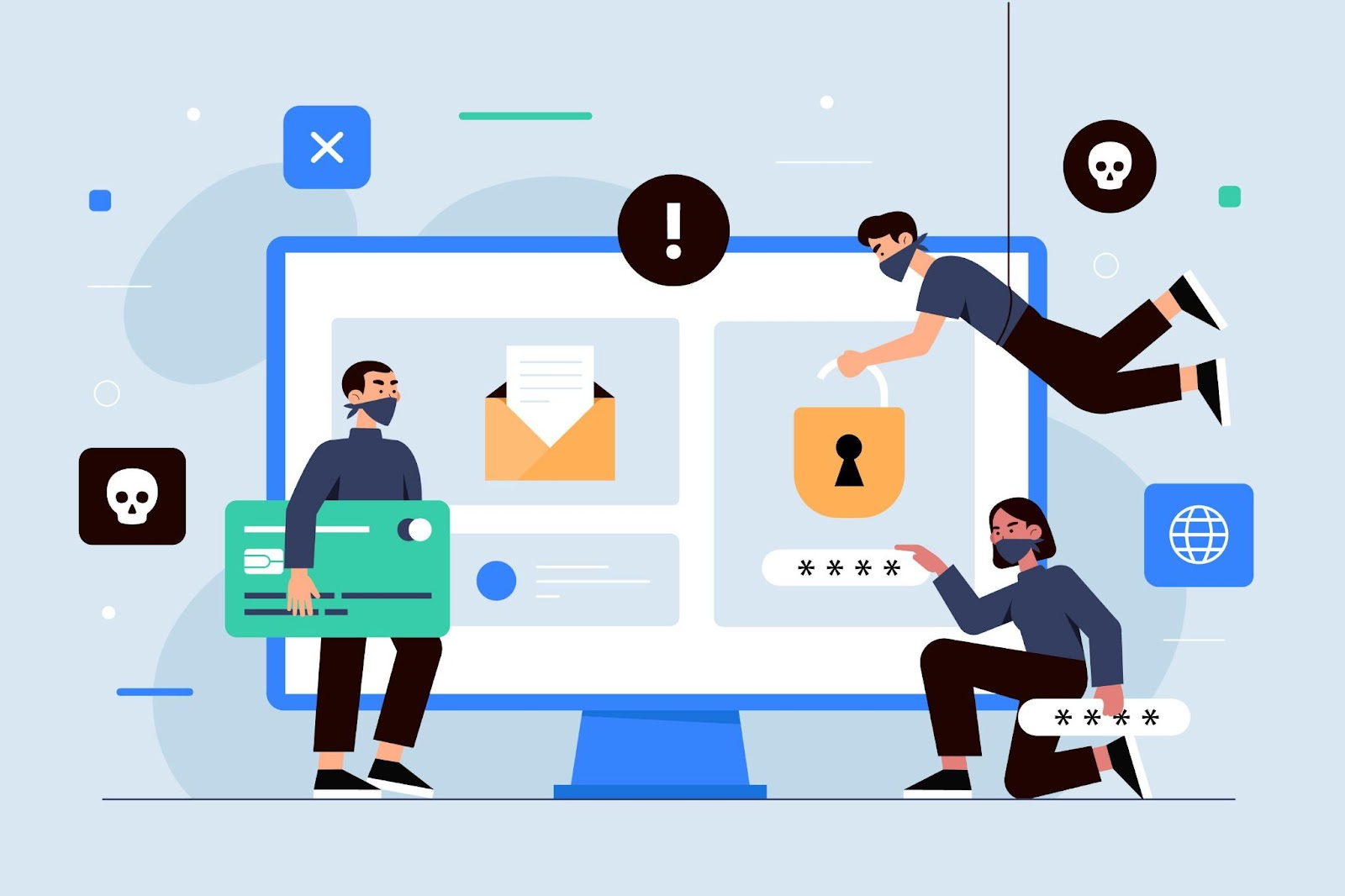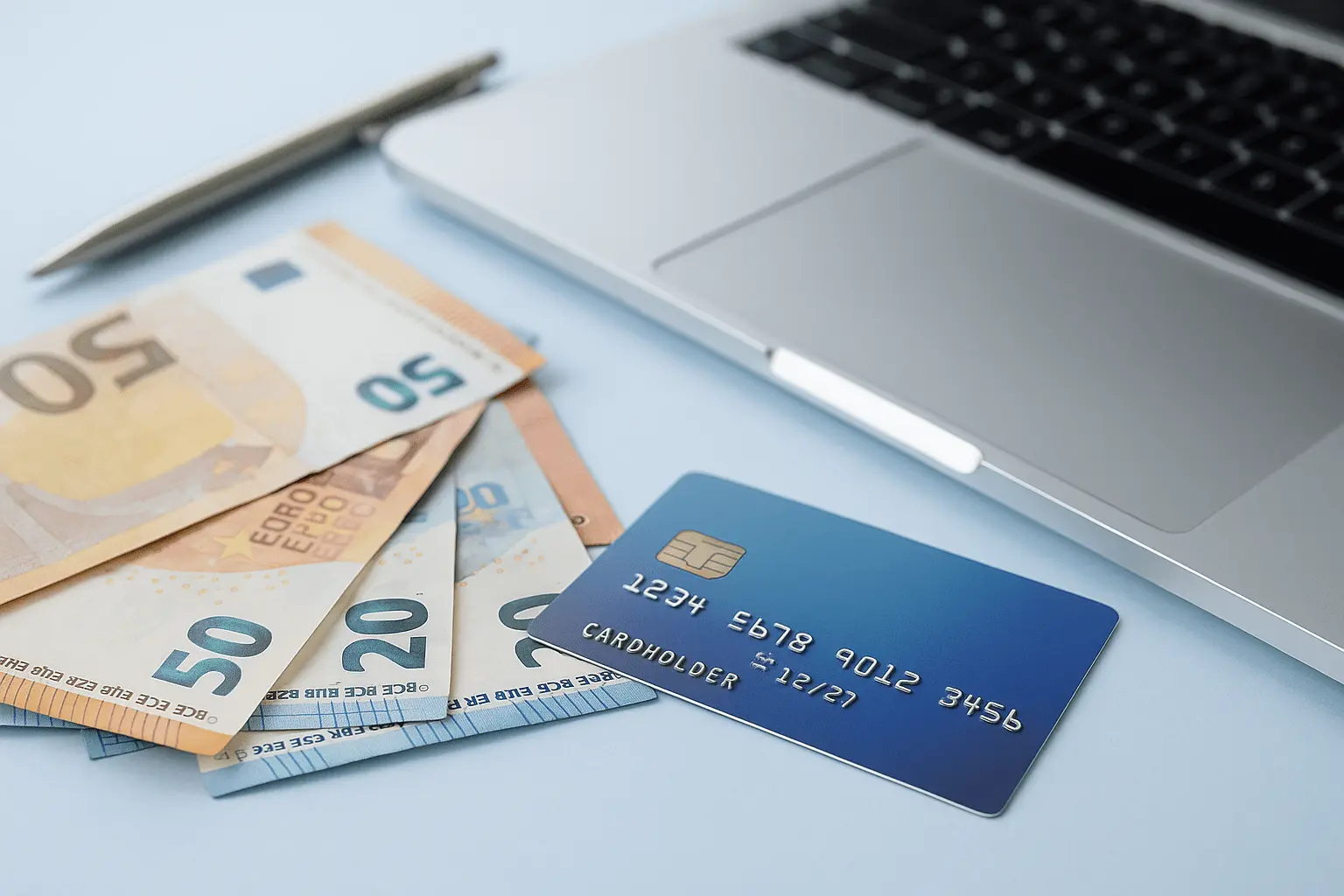Top 5 Ways to Reduce Payment Fraud in Online Transactions
5 min
June 29, 2025
Author:
Roan Dollmann


Digital payments have become the standard for consumers everywhere. They’re fast, easy, and power everything from e-commerce checkouts to subscription models.
But here’s the catch: fraudsters love them just as much as customers do.
In 2024 alone, 79% of organizations experienced payment fraud attacks or attempts. That’s nearly 4 out of 5 businesses facing threats to customer data, revenue, and trust through their payment systems.
Fraud is evolving faster than most businesses can keep up. Phishing scams, data breaches, synthetic identities – you name it. The tactics keep changing, but the damage stays the same: financial losses, reputational hits, and frustrated customers.
The good news? You can outsmart the threats.
In this guide, we’ll break down how payment fraud works, why prevention matters, and the top ways to reduce payment frauds in your online transactions without adding extra friction.
What is Payment Fraud?
Payment fraud is any false, illegal, or unauthorized transaction carried out by cybercriminals to steal money, goods, or sensitive information.
This often involves using stolen credit card or bank account details, forged checks, or stolen identities to make purchases or gain access to financial data without permission.

In ecommerce and online payments, fraud can take many forms – from fake refund requests and unauthorized transactions to lost or stolen merchandise claims.
But here’s the catch: fraud isn’t always obvious. It might be a bot testing thousands of stolen card numbers, a phishing website collecting customer info, or a legitimate-looking purchase from a hacked account.
These subtle attacks can slip through unnoticed, causing serious damage.
While it might only show up as a single transaction in your system, the consequences are far-reaching: chargebacks, revenue loss, damaged customer trust, and costly legal issues.
Why Do You Need To Reduce Payment Frauds?
Payment fraud isn’t just a nuisance, it’s a serious threat that can undermine your entire business and has serious financial consequences. Here’s why prevention should be a top priority:
Protect your revenue
Fraud leads directly to lost sales and costly chargebacks. With payment fraud losses projected to hit $49 billion globally by 2030, every fraudulent transaction chips away at your bottom line. Prevention saves money before it’s even lost.
Maintain customer trust
Your customers trust you with their sensitive financial data. A single breach or fraudulent transaction can destroy that trust, driving customers to competitors and leaving a dent in your brand for years.
In 2024 alone, over 269 million card records and 1.9 million stolen US bank checks were posted on dark web platforms. Every exposed data point increases the risk of fraud, and the likelihood that affected customers won’t return.
Avoid legal and compliance risks
Regulations like GDPR, PCI DSS, and others require businesses to safeguard payment data. Failure to comply can result in hefty fines and legal headaches, compounding the cost of fraud itself.
Reduce operational hassles
Handling fraud isn’t just about lost money. It means hours spent investigating chargebacks, managing refunds, and dealing with angry customers. Strong fraud prevention means fewer disruptions and a smoother operation.
Stay ahead of evolving threats
Fraud tactics constantly evolve: from phishing scams to AI-powered bots. Without proactive fraud prevention, your business will always be playing catch-up, leaving vulnerabilities open for exploitation.
Types of Online Payment Fraud
Online payment fraud isn’t just about stolen credit cards. From bots that test stolen credentials to phishing emails that trick employees into wiring funds, fraudsters are getting smarter and faster.
Understanding how each tactic works helps you spot threats early and protect your business from costly losses. Here are the most common tactics:
Did you know? Offline fraud is still a thing. While most payment fraud happens online, don’t ignore the offline risks. Methods like card skimming, check forgery, and POS tampering are still costing businesses serious money.
Card-Not-Present (CNP) Fraud
Card-Not-Present (CNP) fraud happens when criminals use stolen credit or debit card details to make purchases online or over the phone, without the physical card.
As e-commerce grows, so does this type of fraud, causing businesses to face high chargeback ratios and lost revenue.
Fraudsters often get card data from data breaches or phishing attacks. Then they use this info to place unauthorized orders, making it tricky for sellers to tell a real customer from a fraudster since the card isn’t physically present.
How to prevent it
- Using fraud detection tools like address verification and IP geolocation to flag suspicious transactions
- Requiring strong customer authentication, such as two-factor authentication or CVV codes
- Keeping thorough transaction records including shipping details and customer communication to defend against disputes
- Communicating clear return and refund policies so customers (and fraudsters) know the rules
Card Testing Fraud
Card testing fraud is when automated bots run a high volume of small-value transactions to “test” if stolen card numbers are valid. Think of it as hackers playing the lottery, trying to find cards that work before making big unauthorized purchases.
These tiny charges often fly under the radar but can cause multiple small losses to banks and businesses, and eventually lead to bigger fraudulent transactions.
How to prevent it
- Setting transaction limits and flagging unusual activity, like many small charges from the same IP address
- Using CAPTCHA or other bot-prevention tech at checkout
- Monitoring for rapid-fire transactions or multiple attempts on one card number
- Partnering with payment processors that offer advanced fraud analytics
Account Takeover (ATO)
Account Takeover (ATO) happens when a fraudster hacks into a legitimate user’s account (often through stolen credentials from phishing, data leaks, or reused passwords) and makes unauthorized purchases or changes account details.
Once inside, the attacker can drain stored payment methods, change shipping addresses, or steal personal info, causing headaches for both customers and businesses.
How to prevent it
- Enforcing strong password policies and promoting unique passwords
- Implementing multi-factor authentication to add an extra layer of security
- Monitoring accounts for unusual login patterns, such as access from new devices or locations
- Using behavioral analytics to detect suspicious activity in real time
Educate your users about securing their accounts and keep your defenses tight to stop fraud before it starts!

Phishing
Phishing is a social engineering attack where fraudsters trick people into handing over sensitive info like login credentials or credit card numbers.
They do this by sending fake emails, texts, or creating websites that look trustworthy, like messages from a bank or a popular retailer.
For example, you might get an email asking you to “verify your account” by clicking a link. That link leads to a fake site designed to steal your password or payment details. Variations include smishing (via text messages) and pharming (fake websites spread on social media), all aimed at hijacking your data or installing malware.
How to prevent it
- Train employees to spot phishing signs
- Use email filters and antivirus software
- Enable multifactor authentication to add a security layer
- Regularly update software to patch vulnerabilities
Email Fraud / BEC Scams
Email fraud, especially Business Email Compromise (BEC), is a scam where fraudsters infiltrate or spoof a company’s email system to trick employees into making unauthorized payments or sharing sensitive info.
Often, attackers impersonate executives or trusted vendors with urgent payment requests that look real.
These scams prey on human trust and urgency, making even the most careful employees vulnerable to transferring funds to fraudsters’ accounts.
How to prevent it
- Training employees to spot suspicious emails, especially those with urgent payment demands
- Implementing strong email security measures like two-factor authentication and encryption
- Setting clear payment approval processes that require verification through a second channel (phone call, in-person, etc.)
- Monitoring email traffic for anomalies and unusual requests
Bank Identification Fraud
Bank Identification Fraud occurs when fraudsters use stolen or fake bank details to open accounts, authorize transactions, or commit money laundering. This type of fraud can disrupt banking operations and damage trust in financial institutions.
Attackers may use fake documents, hacked customer info, or social engineering to bypass identity checks and gain unauthorized access to banking services.
How to prevent it
- Implementing robust identity verification protocols during account opening, including multi-factor checks
- Using AI-powered tools to detect fake documents or suspicious applications
- Regularly auditing account activity to spot unusual patterns early
- Training staff to recognize social engineering tactics and suspicious behavior
Identity Theft / Synthetic ID
Identity theft involves stealing someone’s personal data – like name, Social Security number, or credit card info – to commit fraud. Synthetic ID fraud is a clever twist: fraudsters combine real and fake data to create new identities that are harder to detect.
Both types can lead to unauthorized credit applications, purchases, or even false tax returns, causing major financial and emotional harm to victims.
How to prevent it
- Securing personal data with encryption and limiting access to authorized personnel only
- Educating employees and customers about phishing and data protection best practices
- Using advanced verification tools that check for inconsistencies and validate identities in real time
- Monitoring accounts and transactions for unusual activity that could indicate fraud
Chargeback (Friendly) Fraud
Chargeback fraud, also called friendly fraud, happens when a customer makes a legitimate purchase but later disputes the charge claiming they didn’t authorize it or didn’t receive the product. Sometimes, they even keep the product and get a refund, leaving the business with a loss.
This type of fraud can drain revenue and increase fees from payment processors, impacting your bottom line.
How to prevent it
- Keeping detailed records of transactions, including receipts, shipping info, and customer communication
- Verifying customer identity during purchase with CVV checks or two-factor authentication
- Having clear, transparent refund and return policies that customers understand
- Using fraud detection tools that flag suspicious activity before chargebacks happen
Merchant Fraud
Merchant fraud occurs when a business or individual sets up a merchant account with false information or stolen identities, then processes fraudulent transactions to steal money or launder funds. This undermines trust in the payments ecosystem and can lead to severe financial and reputational damage.
Fraudulent merchants may suddenly disappear, leaving banks and customers on the hook for losses.
How to prevent it
- Conducting thorough identity verification and background checks before onboarding new merchants
- Monitoring transaction patterns for suspicious spikes or unusual activity
- Using risk-scoring algorithms and AI tools to flag high-risk merchants early
- Establishing clear compliance policies and regularly auditing merchant accounts
Magecart Attacks
Magecart attacks are a form of cybercrime where hackers inject malicious code into e-commerce websites to steal customers’ payment card details during checkout. The stolen data is then used for unauthorized purchases or sold on the dark web.
These attacks are stealthy and can go undetected for weeks or months, causing serious damage to both customers and the business.
How to prevent it
- Regularly scanning your website for unauthorized code changes or vulnerabilities
- Using Content Security Policy (CSP) headers to block unauthorized scripts
- Keeping all e-commerce platforms and plugins up to date with security patches
- Implementing robust monitoring to detect unusual activity during payment processing
How To Reduce Payment Frauds in 5 Simple Ways
1. Use a smart payment orchestration platform
A smart, high-risk payment orchestration platform (POP) does more than just process transactions. It leverages advanced fraud detection tools (like machine learning, behavioral analysis, and real-time risk scoring) to catch suspicious activity before it turns into costly fraud.
This means fewer false declines, smoother customer experiences, and stronger protection for your business.
One POP that excels in this area is PayFirmly. It combines intelligent routing with built-in fraud prevention to boost approval rates while minimizing risks, all without slowing down your checkout process.
2. Implement strong customer authentication
Require multi-factor authentication (MFA) or two-factor authentication (2FA) during checkout or login. This adds an extra layer of security, making it harder for fraudsters to use stolen credentials or payment details.
3. Monitor transactions in real-time
Set up real-time monitoring and alerts for unusual purchase patterns, such as high-value orders, multiple transactions from the same IP, or shipping addresses flagged in fraud databases.
Quick detection means quicker response to potential fraud.
4. Keep software and systems updated
Regularly update your payment processing software, website platforms, and security patches. Cybercriminals often exploit known vulnerabilities in outdated systems to inject malicious code or bypass security measures.
5. Educate your team and customers
Human error remains a major weak point. Train your employees to recognize phishing attempts, social engineering, and other fraud tactics.
Similarly, educate customers about safe online practices, like not sharing passwords or clicking suspicious links.
Finding A Payment Orchestration Platform You Can Trust
So, we’ve learned that using a smart POP is one of the most effective ways to reduce payment fraud, but not all platforms are created equal.
Choosing the right one for your business means better security, higher approval rates, and lower costs. The good news? PayFirmly delivers on all fronts, giving you the tools to protect your revenue and grow confidently.
With PayFirmly you get:
- Unmatched payment method diversity: Access over 500 payment options – from credit cards and wallets to crypto – so your customers can pay their way.
- Intelligent routing: AI-powered routing picks the best payment provider per transaction, boosting approvals and cutting fees by up to 30%.
- Top-tier security: PCI DSS Level 1 compliance and AI-driven fraud detection protect your business and customers from evolving threats.
- Scalable infrastructure: Cloud-based platform grows with your business, handling anything from startups to global enterprises seamlessly.
- Global reach with local expertise: Accept multi-currency and local payments worldwide, reducing friction and increasing conversion rates.
- Real-time analytics: Monitor payments, spot trends, and optimize performance with easy-to-use dashboards.
- And more…
Payment Fraud Doesn’t Have To Be The Price of Doing Business Online
With the right strategies and the right technology, you can protect your revenue without sacrificing customer experience.
The smartest move? Start with a payment orchestration platform that’s built to fight fraud from the inside out.
PayFirmly uses AI-powered risk detection, intelligent payment routing, and access to 500+ payment methods to help you stay one step ahead, without complicating your checkout or costing you conversions.
Whether you're scaling globally or managing high-risk transactions, it’s built to support your growth while keeping fraud in check.
Ready to take control of payment fraud before it takes a bite out of your business? Let us help!
Secure Crypto Payment Orchestration & Processor with PayFirmly
The future of adult payment processing is intelligent, compliant, and built around you.
Join leading adult brands using PayFirmly to boost approvals, cut fees, and simplify multi-processor management — all from one secure dashboard.






